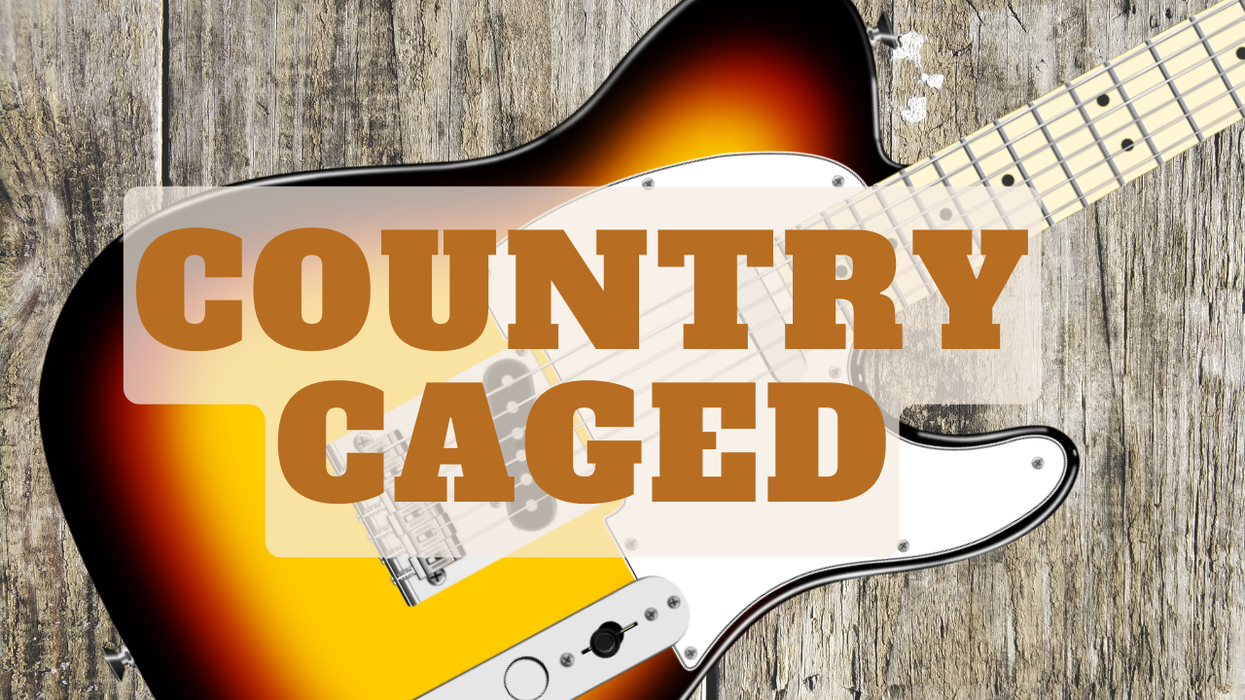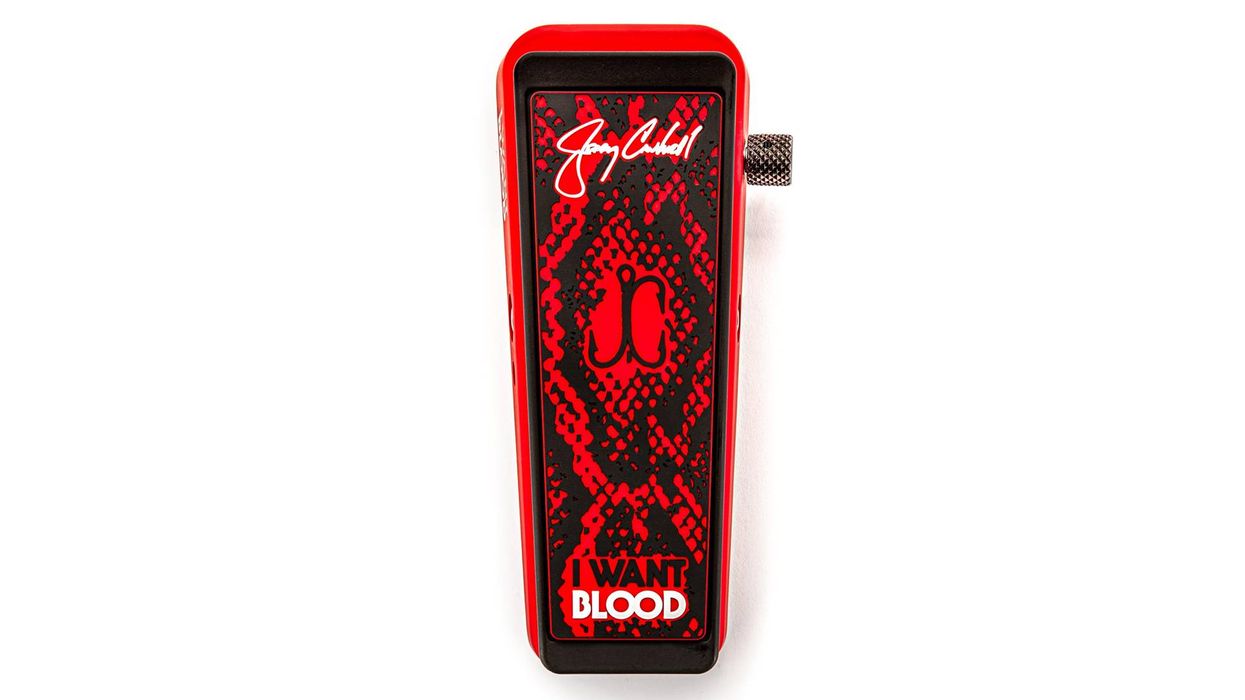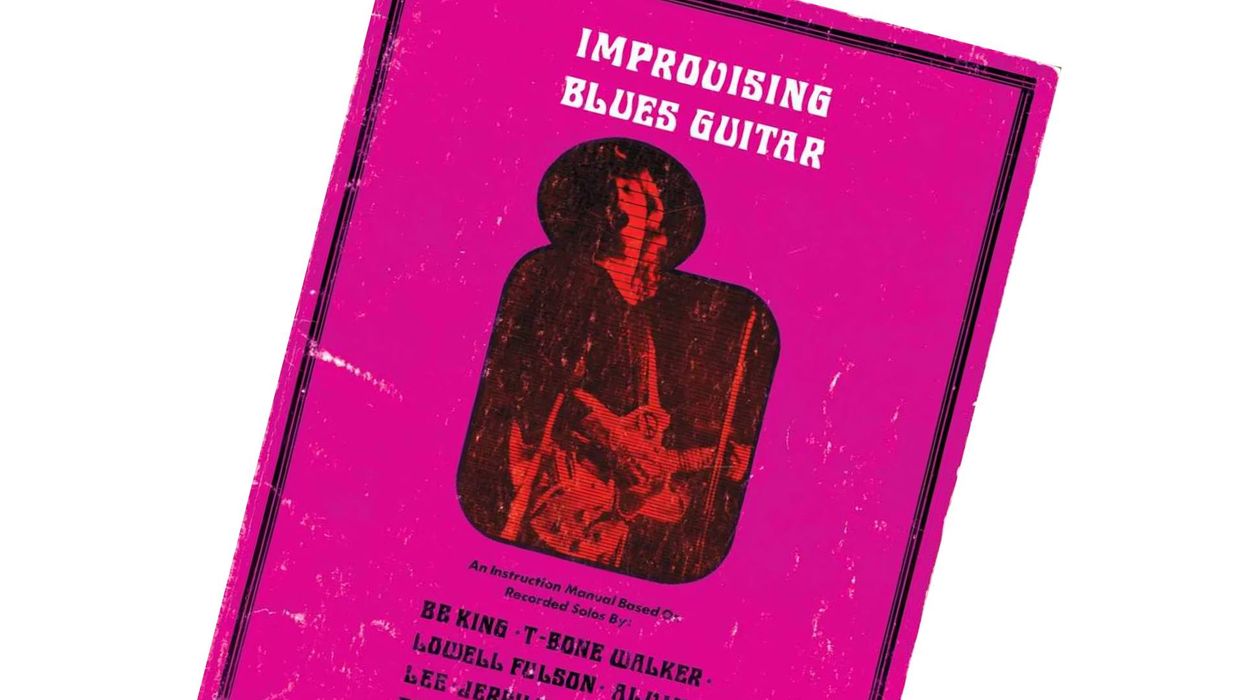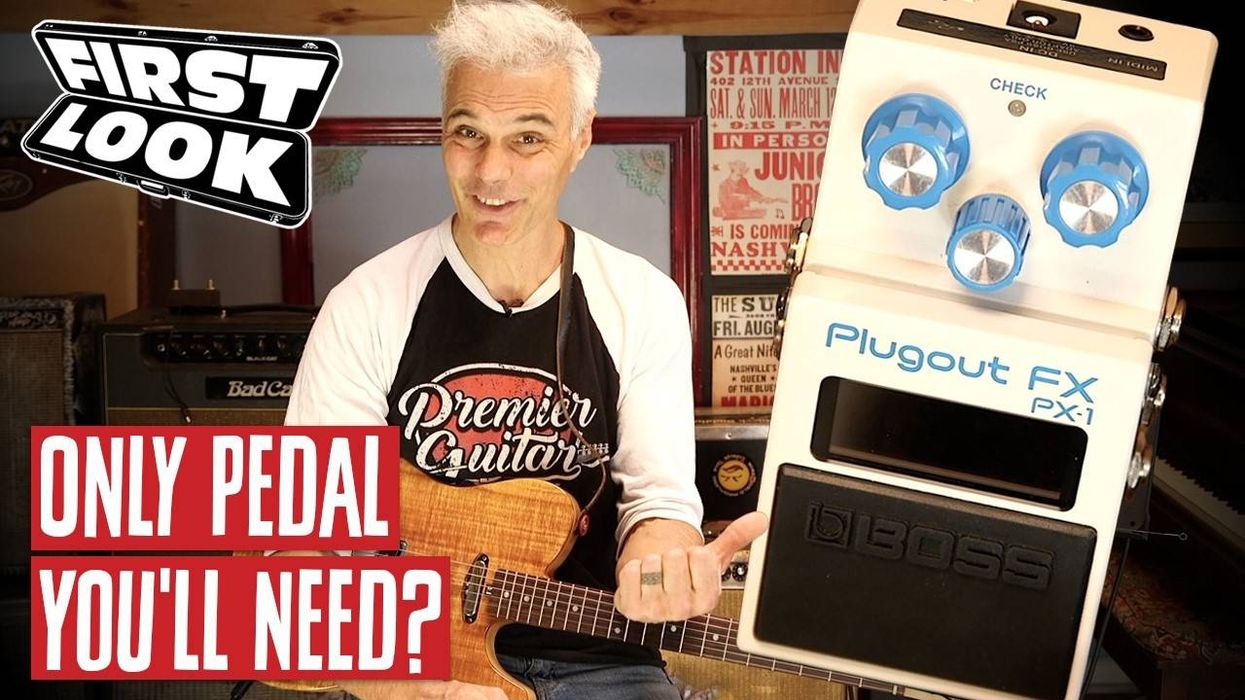The CAGED system is simple way of visualizing the fretboard. Learn to visualize five chord shapes and pretty soon you will be flowing up and down the neck. The main thing I love about the CAGED system is that it can be applied to any type of music. It doesn’t matter if you play in a ’90s country outfit or play in a band that only does metal versions of pop tunes—the system still works.
When we first pick up the guitar the main goal is to play songs we like quickly, and that often involves working up the open-position chords. It’s not usual to start with C, A, G, E, and D—especially if you’re playing in the key of A, G, or D. All of the chord shapes can be moved up the neck to create patterns that you can use to craft solos or embellish chords. Let’s start off with the basic patterns in open-voiced chords (C) and then work our way up the neck into block or barre chord shapes (A through D).
The first two examples will familiarize you with the shapes we want to use. To make things a bit easier, we will stick in the key of C for all our examples. Ex. 1 and Ex. 2 will give you the foundation for what we will be working with. Ex. 1 consists of open-voiced “cowboy” chords that we first learn as beginners. Ex. 2 shows how you can take a C major chord and move it through all the various CAGED shapes.
Now it’s time to play some music. In Ex. 3 I’ve outlined a simple lick in the “C” shape. Notice while it does imply melodic ideas for other harmonies, it still stays in one position. Plus, we stay entirely in the key of C.
In Ex. 4 we now will be using “A” shape, but still play in the key of C. This example contains blue notes (b5 and b3 ) which give it a different, almost dominant-sounding vibe.
With Ex. 5 we move up to the “G” shape. This is a nice pedal-steel lick with a couple of added notes like a b3 and b6. Make sure to use your ring finger for the bends at the 7th fret of the 3rd string, and bend towards the floor, or away from the held G on the 4th string.
Let’s move up the neck again to “E” shape for Ex. 6. This lick is almost a line to a fiddle tune and mostly diatonic except for a b3. I also used repetition here to give it a more melodic feel. I simply took the phrase I played on the 1st string and moved it down one string to repeat it and extend the idea.
Ex. 7 is a nice pedal-tone idea with a repeated theme in the “D” shape, which can be the most difficult to get your hands around. Rhythmically, I wanted to change things up, so I started on the “and” of beat 4 before diving into the repeated pedal-tone idea. In the second measure I outline a 1st inversion F major chord, overlap it with a 2nd inversion F major chord, and then descend a D minor motif before resolving in the final measure.
In Ex. 8 we combine several CAGED patterns and move up the neck. A common way to do move between position is to repeat a motif through the scale. Here, I’m using a double-stop bluegrass lick with some dead note clucks.
Now let’s approach that same idea of an ascending line but do it diatonically (using notes only in the C major scale). There’s a thematic component to Ex. 9 as we are ascending and mimicking the same part up the neck with different notes.
Ex. 10 is a diatonic lick that has rhythmic hits embedded into it. It also implies other chords to make it harmonically more interesting.
Our final example (Ex. 11) is a complex descending line with a bluesy feel to it. It borrows notes not found in the C major scale as chromatic passing tones to spice it up.
And there you have it. The CAGED system is an incredibly powerful tool. But remember, with great power comes great responsibility.
















